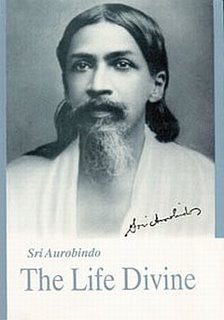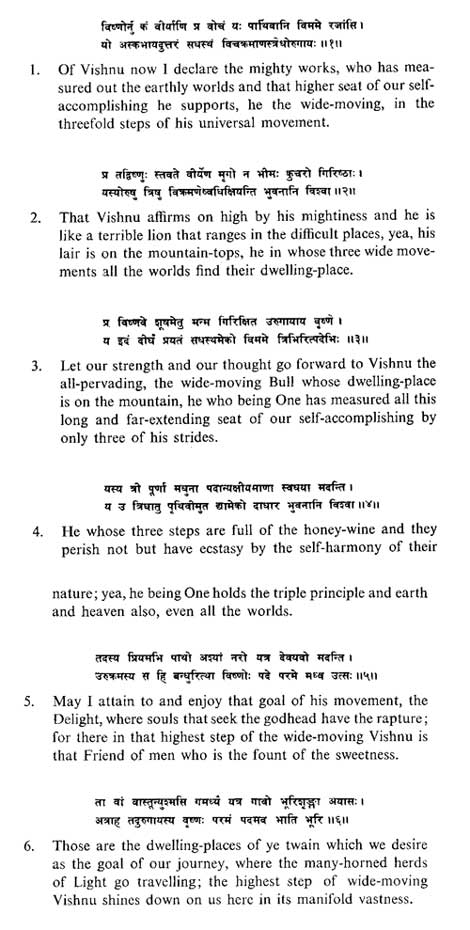 |
VISHNU'S STRIDES
We have seen that Vishnu or the force of sustenance is a particular poise of Reality. Two other equally important poises of the same Reality are the forces of creation and dissolution.
Whatever is created has to ‘dissolve’ when the force of preservation cannot sustain it any longer after an optimal point in time.
Even in our earthly existence, ‘forms’ like dinosaurs disappeared after they could not sustain themselves in the struggle for existence. They outlived their utility, exhausted their vitality or else could not fit into their habitat.
Our human creations too follow a similar fate. We build cities, civilizations, cultures but they are also subject to the ravages of nature, time, history and our own internecine conflicts.
The human being himself has a similar fate. One who is born and triumphed and suffered has to die too. Yudhistir had commented in the Mahabharata that the greatest paradox in life was that though man is destined to die, he behaves as if he is immortal. Yogic psychology has an answer to this phenomenon– the consciousness of man is immortal and outlives the individual life-span. That is why the urge for immortality springs from the intuitive schemata of our
consciousness. |
|
It is in the perspective of what we understand as ‘consciousness’ in
yoga that we have to understand the significance of the three famous
strides of Vishnu. The three strides of ‘Vishnu’ actually span three
cardinal ‘worlds’ in terms of consciousness. THE FIRST WORLD IS THE
‘EARTH OF THE PHYSICAL CONSCIOUSNESS’ (or the physical plane of
consciousness).
THE SECOND WORLD IS THE ‘HEAVEN OF MIND’( or the mental plane of consciousness). Of course, in between the physical and mental worlds (or physical and mental planes of consciousness), there is the “intervening habitation” (ANTARIKSHA) of the vital worlds (the vital plane of consciousness). In fact, evolution starts with physical consciousness (the first stride of Vishnu); which in turn gets “animated” by the vital consciousness (the intervening habitation). The stage is now set ready for the manifestation of the mind-principle (the second stride of Vishnu).This is not the end as the “MIND” is not the last word in the consciousness perspective. The whole of Indian spirituality revolves around the concept that there is a Reality beyond mind. This Reality was hard to describe with “attributes”. The human mind however finds it extremely difficult to describe something without attributes. Hence this Reality was also experientially perceived with the supreme attributes of “ Existence-Consciousness-Bliss” (Sachchidananda). This ‘plane’ of Sachchidananda is a world of BLISS—a world of unconditional, self-existent, motiveless, perfect Delight (or Ananda). It is motiveless yet is the raison-d-etre of existence, the value dimension of creation. THE THIRD STRIDE OF VISHNU IS THIS WORLD OF BLISS—THE PLANE OF SELF –EXISTENT DELIGHT OR ANANDA. There is also an intervening habitation (Maharloka) between the world of Bliss and the world of Mind—it is the “world of the superconscient Truth of things”. Thus the three strides of Vishnu span 5 worlds –
The physical consciousness
The ‘intervening’ vital consciousness
The mental consciousness
The ‘intervening’ world of ‘superconscient Truth of things’
The plane of Bliss (Sri Aurobindo; The Secret of the Veda, Page 336-337)
Vishnu in Sri Aurobindo’s Stride
That the world of Bliss is the third stride of Vishnu was always acknowledged. By an extension of consciousness mystics and seers could have an experiential realisation or identification with this world. But it was not conceived how this world of Bliss could be made to manifest in earthy existence. In fact, the ‘technology’ of manifesting the Absolute Reality in earthly terms was ‘missing’. And it was because of this missing element that creation could not be sustained and dissolution (Pralaya) had to repeatedly occur.
Sri Aurobindo is concerned with this ‘missing’ element. If it could be found and activated, then the creation could progress unhindered instead of being dissolved. And this is what Sri Aurobindo wants; OUR PRESENT EARTHLY CREATION SHOULD NOT BE DISSOLVED BUT MADE TO PROGRESS TO ITS FULLEST PERFECTION. If such a progress is attempted, our human species will not share the fate of dinosaurs. Even the individual consciousness may physically exceed the habitual life span
The Alchemy
Sri Aurobindo describes that a progressive creation that does not dissolve can only be initiated if the evolution of human consciousness exceeds the mind and reaches a very high plane, which he termed as the ‘supermind’. This is “a force higher than all those which have so far manifested and which will give the body a plasticity that will allow it to progress constantly, that is, to follow the divine movement in its unfolding” (The Mother, Collected Works, vol.7, page 209).If the Supramental consciousness manifests in the earthly consciousness, the Bliss-principle (Ananda) can be activated in life.
Indian Yoga confirms three levels of experience: the individual, the universal (cosmic) and the transcendent that holds and surpasses the other two. In the ordinary existence, the individual and the universe are not in a very harmonious relationship. The universe overawes the individual. Sri Aurobindo considers that the universe is a diffusion of the divine consciousness in infinite space and time while the individual is its concentration within the limits of space and time. Thus both have an equal status in the perspective of consciousness. But practically speaking, the individual, bound by his limitations cannot equate himself with the universe, which appears to him as too impersonal and boundless. It is only if the ‘supermind’ principle is activated in the evolutionary scheme of things that the universe and the individual can relate to each other as well as to the transcendent, “become aware of and possess that which they both are and therefore stand explained to each other, in harmony with each other, unified. (The Life Divine, pg 51)
However, anything cannot evolve from zero. If the world has to climb beyond mind to the higher ‘supermind’ principle, then that climb must be preceded by a descent of that higher principle as a potentiality in the heart of matter itself. “The universe and the individual are the two essential appearances into which the Unknowable descends and through which it has to be approached; for other intermediate collectivities are born only of their interaction”. (Ibid)
Naturally, this ‘descent’ of the higher principles into the bosom of matter and the inconscience is not haphazard but follows a particular pattern of ‘self-concealing’ (which we will deal in subsequent chapters). Likewise the reverse movement of revelation takes the form of an evolutionary ascent.
Dawn
During the journey of the evolutionary consciousness there are particular stages through which the Supreme Reality progressively unfolds. EACH SUCH STAGE IS A MILESTONE IN EVOLUTION, EACH SUCH STAGE IS A LUMINOUS EMERGENCE, AND EACH SUCH STAGE IS A WORLD THAT VISHNU TAKES IN HIS STRIDES. The plane of Mind has manifested in our earthly existence. The world of Bliss is yet to be manifested in our earthly reality though it can be experientially perceived at higher states of consciousness.
Each such luminous emergence in the scheme of evolution of consciousness is symbolized as a Dawn. Dawn is one of Sri Aurobindo’s favorite imageries. He wraps His metaphysical quest in a romantic form and appeals to the Goddess of Dawn—nay, to the dawn of God-Light and invokes her Grace to effectuate the alchemy so that the ‘lead’ of mortality turns into the “gold” of divinity;
‘Two are the ends of existence, two are the dreams of the Mother;
Heaven unchanging, earth with her time-beats yearn to each other, -
Earth-souls needing the touch of the heavens peace to recapture,
Heaven needing earth’s passion to quiver its peace into rapture.
Marry, O lightning eternal, the passion of a moment- born fire!
Out of thy greatness draw close to the breast of our mortal desire!
'
(Sri Aurobindo; Collected Poems, Ahana, page – 523)
Thus the earth-soul, the traveler in the matrix of space and time, cut off from the Divine source has to accept doom. Once the earth-soul gets reconnected with the Divine source, its wonderings merge with Vishnu’s strides and it can attain the status of immortality: ‘The Soul of man, a traveler, wonders in this cycle of Brahman, huge, a totality of lives, a totality of states, thinking itself different from the Impeller of the journey. Accepted by Him, it attains its goal of Immortality.’(Verse 1.6 from Swetaswatara Upanishad, quoted in beginning of Chapter V1 of The Life Divine)
The Vedic imagery
Rigveda verses, 1.154; I-6.(Translated by Sri Aurobindo; The Secret of the Veda, pages 331-332)

[N.B. The Vishnu of the Vedas must not be confused with the later Vishnu of post-mythologies. To the Vedic Rishis, there is only ONE universal Being (Deva) of whom the gods are all alike forms and cosmic aspects. Each one of them is a whole being and contains all the other gods. Later, the idea of the One Being (Deva) emerged fully in the Upanishads with such splendor that the ‘god’s’ became sidelined, got involved in mythological stories and got degraded from their Vedic poise. The dwarf Vishnu of later mythologies is different from the Vedic Vishnu
- even his strides are different. Sri Aurobindo categorically points out ‘”We have nothing to do here with the dwarf Vishnu, the Titan Bali and the three divine strides which took possession of Earth, Heaven and the sunless subterrestrial worlds of Patala” (ibid, page 336).]
(Patala is the inconscience
- the Hell)
Date of Update:
18-Nov-11
- By Dr. Soumitra Basu
|

